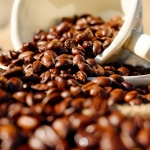
News • Rise and shine
Caffeine shortens recovery time from general anesthesia
Caffeine helps quickly boost wakefulness following general anesthesia, a new study finds. The stimulant—used daily by more than 90 percent of adults in the U.S.—appears to alter physiological function in two different ways to shorten recovery time.

























